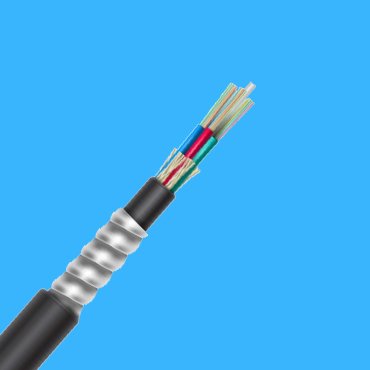A Fully Certificated Shipboard Cable Manufacturer in China
Being a professional shipboard cable manufacturer over 20 years, we are able to provide you a wide range of the cable and its associated accessories, including
- Medium Voltage Shipboard Cable
- 0.6/1 kV Low Voltage Shipboard Cable
- 150/250 V Shipboard Telecommunication Cable
- Special Ethernet & Fiber Optic Cable Used on Shipboard
What is a Shipboard Cable
Shipboard cable, referring to a wide range of control & instrumentation cable, low & medium voltage power cable, and some telecommunication cable used on board of a ship, which requires to have a much higher corrosive performance.
We can design & manufacture full new series of marine cables used on shipboard and oil platform cables, which meet or exceed the strict requirements of IEC, BS,JIS, Mil-Spec standards, and provide ABS, BV, CCS, DNV,GL,LRS,RINA,NK & ISO certificate etc.
PowerTel & its associated factory are committed to offering you a package supply of shipboard cable and its cable accessory for your river or marine ships.
Shipboard Cable by IEC Standard
Based on requirement IEC Standard, shipboard cable types are, Power & control cable and instrumentation & control telecommunication cable.

Twisted pair conductor, XLPE Insulated, Braided by galvanized steel wire
FR-PVC or FR-LSZH inner & outer Sheath

Twisted pair conductor, XLPE Insulated, Braided by copper wire
FR-PVC or FR-LSZH inner & outer Sheath

Twisted pair conductor, XLPE Insulated, Shielded by aluminum foil & Braided by copper wire
FR-PVC or FR-LSZH inner & outer Sheath

Halogen-free Inner Sheath
Braided by copper wire
FR-LSZH Outer Sheath

FR-LSZH Inner Sheath
Armored by galvanized steel wire
FR-LSZH Outer Sheath

FR-LSZH Inner Sheath
Armored by copper wire
FR-LSZH Outer Sheath
Other Cable Used on Shipboard
There are twisted pair copper cable UTP/FTP, and fire & corrision resistance fiber optic cables.
Product Feature Box




Most Advanced Manufactruring facilities for Shipboard Cable
The most advanced Manufacturing facilities , combined with premium copper wire and xlpe insulation materials, are the guarantee of the highest quality for our shipboard cable, ensuring it stands up to the toughest conditions.


Fully Certificated Shipboard Cables
The majority of the cables that are used on ships have obtained certification from the following organizations: ABS, BV, CCS, DNV, GL, LRS, RINA, NK, and ISO.
Custom Design for Your Shipboard Cable
At our engineering & designing center, we are creating custom designed shipboard cables to meet the exact specifications of your project. Our experienced team of engineers and technicians can design and produce a range of cables that can be used for a variety of marine applications.

Applications for Shipboard Cables


Related Product
Some Principles to Install Shipboard Cables
- The shipboard cable laying route should be as straight and easy to maintain as possible. When the main cable is laid in a concealed manner, there must be measures on the closed board or closed board along the laying path that are convenient for opening, maintenance, and repair; If the branch junction boxes of all cable lines are installed in a concealed manner, measures must be taken to facilitate the opening of the branch junction boxes and durable markings must be provided; It is not allowed to lay the cable in the heat insulation or sound insulation layer, or spray foam plastic and other heat insulation materials and paint on the cable; All cables in refrigeration rooms, boiler rooms, etc. should be laid with open wires; Residential rooms should be laid in a concealed manner as much as possible. If exposed wire laying is used, flame-retardant plastic grooves can be used for protection.
- Shipboard Cable laying should prevent mechanical damage
Try to avoid laying cables in areas prone to mechanical damage such as cargo holds, storage rooms, decks, and bilge steel plates. If this cannot be avoided, cable shields or cable ducts must be installed for protection. The thickness of the cable cover on the cargo hold and deck should generally not be less than 3mm to ensure sufficient strength; Try to avoid laying cables on movable or detachable components and accessories to avoid damaging the cables during movement or disassembly of movable parts; When shipboard cables pass through the deck, metal cable pipes, cable drums, or cable enclosures should be used for protection; Laying cables inside the mast can be led out through multiple watertight cable drums or watertight stuffing boxes at a height of 200mm or more from the deck; Cable laying should not cross the expansion joint of the ship. If it is indeed unavoidable, the cable length should ensure a certain degree of expansion;
- Shipboard Cables should be laid as far away from heat sources as possible. Heat sources such as steam pipes, exhaust pipes, flanges, resistors, boilers, etc. The distance from the parallel space to the heat source should generally not be less than 100mm; When cables intersect with heat sources such as steam pipes and exhaust pipes, their spatial distance should generally not be less than 80mm, otherwise effective insulation measures should be taken.
4.shipboard Cable laying should prevent moisture condensation and the influence of oil and water. Try to avoid laying cables in places with moisture condensation, dripping, and invasion of oil and water. When laying cables under patterned steel plates that are prone to oil and water immersion, the cables should be laid in metal hoses (Plica sleeves) and installed close to the patterned steel plates. The two ends should generally be 250mm higher than the patterned steel plates, and the cables should be sealed with stuffing boxes or protective rings to avoid passing through flammable, explosive, and corrosive gas affected areas (such as oxygen rooms, paint rooms, battery rooms, coal bunkers, ammunition depots, etc.). Cables are strictly prohibited from crossing oil tanks. Generally, cables should not pass through the water tank. If unavoidable, a single seamless steel pipe can be laid through the pipe. The welding between the pipe and the bulkhead should ensure water tightness, and anti-corrosion measures should be taken. The distance between cables and ship shell plates, decks, bulkheads, and fire barriers shall not be less than 20mm; The laying distance between the cable and the double bottom, as well as the lubricating oil and fuel tank, should not be less than 50mm.
5.Shipboard Cables with different allowable working temperatures should not be laid together. If laid together, the allowable working temperature of all cables in the same bundle should be based on the cable with the lowest allowable working temperature in that bundle. For important equipment that requires dual power supply, such as the power supply of the steering device and the dual cables used for its control, it should be laid as far away from the horizontal and vertical directions as possible. Cables for intrinsically safe circuits and non intrinsically safe circuits should be laid separately. For example, they are not allowed to be bunched together, placed in the same enclosure or pipeline, and the minimum gap for bundle laying on the same cable support should not be less than 50mm. For important equipment with dual sets of equipment or dual systems that perform the same important function as each other as backup (such as engine room signaling clocks), their respective power supply and control cables should be laid as far away as possible in both horizontal and vertical directions. Cables with different sheaths or outer protective layers that may damage the sheaths or outer protective layers of other cables during laying should generally not be tied together unless protective measures are taken. The main circuit cables of electric propulsion devices should be laid separately from excitation cables and other low-voltage cables. The cables to each generator should be laid separately and divided into at least two routes. Power cables and control cables can be bundled together and installed on a same cable tray. Except for optical cables, signal cables for important control, monitoring, and safety systems such as ship propulsion and maneuvering may be affected by electromagnetic interference and cannot be laid in bundles with power or lighting cables. Cables used for important equipment or emergency power equipment, emergency lighting, and onboard communication or signal equipment used in emergency situations should be kept as far away as possible from kitchens, laundry rooms, machinery spaces and their cabins, as well as other highly fire hazardous locations, with the exception of cables supplying power to equipment in these spaces. The cables from the emergency distribution board to the steering gear and from the emergency distribution board to the emergency fire pump shall not be protected by the engine room or pipes. Three core symmetrical cables should be used for all phase systems. If it is necessary to use single core cables for power systems with currents above 20A, their laying should comply with the specification requirements.
- The laying of shipboard cables usually should not have joints. For example, when connecting joints for maintenance or segmented shipbuilding, the conductivity, insulation, mechanical strength and protection, grounding, fire resistance or flame retardancy of such joints should not be lower than the corresponding requirements for cables. The cables should be connected and branched in appropriate junction boxes. The terminal or busbar should have a size suitable for the cable rating. There should be clear markings at the connections and branches. Metal sheathed cables with a working voltage exceeding 50V must be reliably grounded.
7.Before shipboard cable laying, all supporting parts, connecting parts, and installation parts on the line should be checked for any omissions, sharp edges or burrs, whether the welding is secure, and whether all have been coated with rust proof paint and finished paint. After the cable starts to be laid, gas cutting and welding should be avoided as much as possible on and near the laying line to avoid burning the cable, otherwise temporary protective measures should be taken. Before cable laying, the cable model, code, specification, length, name and position of the starting and ending equipment, as well as the intermediate stop points should be carefully checked to ensure that they match the cable inventory and drawings, and to check for any damage to the cable. The cable laying should be carried out in the order specified in the cable inventory. For branch cables, if they are not included in the cable inventory, they can be cut and laid on site according to the equipment layout diagram and electrical system diagram according to the actual wiring, and temporary markings can be made at the two ends. Branch cable laying is generally applied after the main cable is laid. When laying cables, the cables should be moved continuously and evenly along the direction of the laying route of the inspected and qualified supporting and connecting parts, and should not be dragged forcefully to avoid damaging the cables. For backbone cables, the cable should be stopped at the designated location according to the “stop mark” on the cable. When cables with different sheaths are mixed and laid, special attention should be paid to preventing the cables from rubbing against each other and damaging their sheath layer. After each cable is laid, it is necessary to straighten and level the cable, check the length, and wrap the cable in place or the cable to be laid in the next step, hanging it near the equipment. Do not litter or trample on cables. After all cables are laid, the cable model, specifications, length and total number of cables entering the equipment should be comprehensively checked. After verifying that there are no errors, the cable can be tightened. After the cable is tightened, there should be no looseness or damage to the cable, and the circuit should strive to be straight and tidy. Horizontal cables are generally laid using a bottom support method, and various supports should be installed horizontally as much as possible to avoid unreasonable stress concentration at the upper end of the cable tie during cable binding. Except for optical cables, signal cables for important control, monitoring, and safety systems such as ship propulsion and maneuvering cannot be fastened in the same bundle as power or lighting cables, with a bundle spacing of no less than 50mm. When continuously using nylon ties to secure cables supported horizontally or vertically, a metal tie must be used every 1.5m to secure the cables. The cable bundle should be tightened within the effective length of a nylon tie, and the tie should not be extended. Special tools should be used to tighten the tie to ensure proper tightening. In the same cable bundle, the orientation of the buckle or lap of the tie should be consistent and should not be arbitrarily placed. After tightening the tie, the excess part should be cut off at a distance of 5-6mm from the buckle or lap, striving to be neat. The cable fastening spacing should generally be 300mm, and the cable should be fastened with a tie on each long hole guide plate of the combined cable support. Cable fasteners can usually use stainless steel ties, plastic stainless steel ties, or nylon ties. The general regulations for the selection of cable ties are: plastic stainless steel cable ties should be used for cables fastened in engine rooms, Class A important machinery spaces, fire compartments, outdoor spaces, and more humid compartments. Stainless steel cable ties, plastic stainless steel cable ties, and nylon cable ties can be used in other places.
- When laying shipboard cables in metal pipes or metal hoses, the inner walls of the pipes and pipelines should be smooth and free of burrs, and the surface of the inner and outer walls should have an anti-corrosion protective layer. The pipes and pipe ends should be free of sharp edges and sharp edges. Otherwise, protective rings should be installed. The bending radius of pipes and pipelines should ensure that the bending radius of the cable is not less than the allowable value. For pipes with an outer diameter greater than 63mm, the bending radius should not be less than twice the outer diameter of the pipe. The threading coefficient (the ratio of the total cross-sectional area of the outer diameter of the cable to the inner cross-sectional area of the pipe) should not exceed 0.35. Pipes or pipelines should ensure mechanical and electrical continuity, and should be reliably grounded. The arrangement of pipes or pipelines should prevent water from accumulating inside (considering the possibility of condensation), and drainage holes should be provided. In places where oil and water are easily accessible, both ends of pipes or pipelines should be sealed with fillers. If the joint of the pipe is directly connected to the inlet of the equipment, the connection should ensure water tightness. When pipes or pipelines pass through ship expansion joints, or there is a possibility of pipeline breakage due to being too long, expansion joints should be installed. The spacing between waterproof cable distribution boxes on the main deck should not exceed 30m. If the cable is laid inside the enclosure channel, the structure of the enclosure channel should not make it a channel for fire to spread from one deck to another. Cables used as cold cathode glow discharge lamps shall not be installed in metal tubes unless they are protected by metal sheath or shield.
- When shipboard cables pass through non watertight bulkheads and hull components, cable frames or bushings should generally be installed on the watertight bulkheads and hull components; when the gap between the bulkhead cable frame and the cable bundle is greater than 10mm, filler should be used for sealing. When a single cable passes through a composite rock wool board or calcium silicate board, a flame retardant nylon cable liner should be installed.
- A single shipboard cable can pass through watertight bulkheads, such as kitchens, toilets, bathrooms, etc. stuffing boxes can be used, while multiple cables can be combined with stuffing boxes or penetration devices to maintain their watertight integrity. The filler for the penetration device should be made of non combustible and corrosion-resistant materials and approved by the relevant classification society. The tightening of the packing box should be done as much as possible to compress the packing onto the sheath. After the packing box is compressed, the nut should be exposed by 2-3 teeth.
- A single shipboard cable can be used as a cable conduit with a stuffing box, while multiple cables can be used as a through piece, and the height should not be less than 200mm. The welding ends of these penetrations should extend into the deck (if there is an insulation layer, it should be more than 20mm outside the insulation layer).
- The shipboard cable runs through the fireproof barrier and is laid. The cable that passes through the A-level fireproof area on this ship is filled and sealed with fireproof sleeves and sealant. The B-level fireproof area is filled and sealed with non-toxic fireproof blocking materials.
- Shipboard cables unrelated to refrigerated areas should not pass through refrigerated areas. All cables in refrigerated areas should be laid with open wires, and there should be a certain space left between the cables and the walls of the refrigerated room. The supporting parts of fixed cables should be galvanized or other anti-corrosion measures should be taken. The fasteners are made of stainless steel ties. When the cable passes through the insulation layer, it should be laid in the cable duct, with watertight stuffing boxes at both ends of the duct and flame retardant nylon pipes in the middle. Cables insulated or sheathed with polyvinyl chloride are generally not used in refrigerated locations, unless the polyvinyl chloride mixture is suitable for low-temperature operation.
- The shipboard cables laid on the outdoor deck should use non-metallic impermeable sheathed cables and be laid in metal pipes or metal shells. All cables entering the radio system and cables of the radio navigation aid system should maintain electrical continuity and at least have reliable grounding at both ends. If there is a radio room, cables unrelated to the radio room should not pass through the room. If they must pass through, they should be laid in continuous metal pipelines, and the metal pipelines should be reliably grounded at the entrance and exit of the dedicated radio room.
Medium voltage shipboard cable installation
Medium voltage shipboard cables with metal sheath or armor and effective grounding can be laid open, such as on guide plates. If medium voltage cables without metal sheath or armor are used, they should be laid in metal pipelines or metal pipes, and the continuity of grounding of these metal pipelines or metal pipes should be ensured. Other shipboard cables should not be laid in the same metal pipeline and metal pipe as medium voltage cables. Medium voltage cables should be laid as far away from low voltage cables as possible and in areas that are not susceptible to mechanical damage. Medium voltage cables should be laid without passing through living spaces as much as possible. Medium voltage cables should be clearly marked for easy identification. During the laying process, the bending radius of the cable should meet 9 times the outer diameter of the cable. When entering the same equipment, the bending radius should be as consistent as possible. When pulling and laying cables, horizontal or vertical pulleys can be installed at appropriate positions along the cable path to reduce the tension on the cable. The cable laying on the bracket should be firmly tied to avoid cable wear caused by ship shaking. During the storage and cutting process of shipboard cables, protective treatment should be applied to their ends. The shielding of three core medium voltage power cables is grounded at both ends; The shielding of single core power cables is only grounded at one end.







